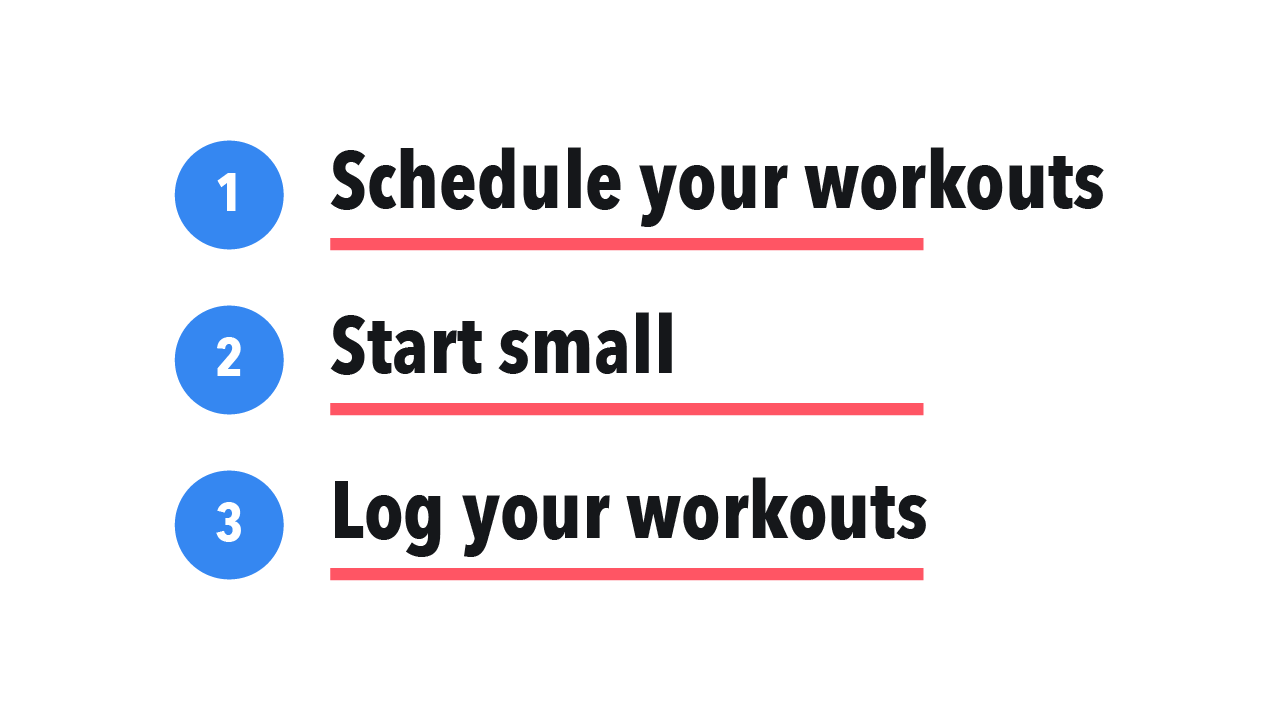Consistency Is The Key To Progress In Your Fitness Goals
Sorry to say, but if you're looking for definite answers (e.g. three months), you won't find it here. Why? Because the time needed for you to achieve your fitness goals depends on how much time and effort you're willing to put into showing up at the gym–or the track, studio, etc.–consistently.

Trudging along on your fitness journey? ?
If you are, then you've probably had this question on your mind for quite some time now: "How long does it take for the results to show?" And when referring to results, it could be anything. Like squat numbers, the visibility of your abs, or even the number on the weighing scale.
Sorry to say, but if you're looking for definite answers (e.g. three months), you won't find it here. Why? Because the time needed for you to achieve your fitness goals depends on how much time and effort you're willing to put into showing up at the gym–or the track, studio, etc.–consistently.
Yes, you read that right.
The most critical factor that determines your progress isn't fancy training methods like supersets or periodization. Nor is it trendy diets like the paleo diet. It’s just consistency.
But… Why is this so? And more importantly, what can you do if you, yourself, are struggling with consistency? Consider this article a guiding hand.
What is consistency?
As defined by the Cambridge dictionary: consistency, as a noun, is defined as ‘the quality of always behaving or performing in a similar way, or of always happening in a similar way.’ In the context of fitness, it simply means the act of showing up and getting the work done–regularly.
And when it comes to the timeline, we’re not talking about days or weeks; instead, we’re referring to years of hard work and sweat.
Why consistency is key to your fitness journey
Results take time
Well, a significant reason is that things don't just happen in a split second–you'll need time to get stronger, build muscle, and lose fat. You're not going to do a set of hamstring curls one day and wake up with massive hamstrings. Your efforts add up, and maybe even compound, over time.
As Anthony Robbins said: “It’s not what we do once in a while that shapes our lives. It’s what we do consistently.”
Consistency forms habits
Another reason why consistency is key? It’s that your habits–rituals and behaviors you perform automatically–are grounded in consistency. Just so you know, your habits (e.g. reaching out for a pint of ice cream instead of working out after work) don’t just appear out of nowhere. They aren’t the results of genetics or random chance. Instead, they’re merely products of your behavior, accumulated over repeated instances.
For instance, you wake up at 5 am one day to work out and go about your business as usual. You wake up the next day at 5 am, work out again, and resume your regular activities. After a few days of this, you’re almost going to feel like you’re ‘programmed’ to wake up at 5 am. And you’d feel off the entire day if you don’t get to break a sweat.
Imaginably, relying on your habits to get you to the gym (for example) is much better than simply sitting around and waiting for motivation to hit you.
Closely related to emotions, motivation is wildly unpredictable and fleeting.
That’s why you’re never going to see real, sustained progress if you choose to rely on motivation alone.
Reduces the effects of delayed onset muscle soreness (DOMs)
If you’ve ever gotten back to the exercise bandwagon after some time off, the chances are you have felt the characteristic ache of delayed onset muscle soreness (DOMs). Typically kicking in roughly a day or two after exercise, your muscles feel sore and tender due to microscopic tears to the muscle fibers.
And because even sitting down on the toilet can become a challenge during this period… You'd be giving your workout sessions a miss for the next 3 to 4 days.
Before you know it, it'll be a month before you get back into your 'routine' again. And so begins a vicious cycle of having to miss your sessions because of terrible DOMs.
The way to avoid this is to set up a slow, graduated exercise program.
Ease into your routine at a slow, steady pace–then gradually build up the intensity (consistently, of course).
How to develop consistency
So, you now know how important consistency is. But that still doesn't mean you know how to be consistent in your fitness journey. Don’t worry, here are a few tips.

#1 – Dedicate a block of time to workouts
If you fail to schedule your workout sessions, chances are, you're going to skip them when things get overwhelming. Tiring day at work? Quarrelled with your partner? Or, you just don't feel like it?
These can all lead to you not showing up at the gym. To avoid this, you want to dedicate a block of your schedule to workouts. Do it right now. Go onto your Google calendar and block at least an hour of your time a day to get active. This way, you don't have any (illegitimate) excuses. Make sure you come back to read the rest of this article!
#2 – Start small
Don't go from training one day a week to 5 days a week right away. Go slow. Try to make as little change to your daily routine as possible. Aim for just 2 to 3 times a week–and whenever possible, increase the intensity of your workouts first before adding more sessions to your calendar.
Going from zero to hardcore instantly reduces the likelihood that you’ll be consistent.
#3 – Log your workouts
Last but not least, you should track and record your workouts. Having a visual reminder of your workout streak motivates you to keep going–and is, therefore, why you should find some way to log your workouts. An easy way to do this would be to mark a cross on your notebook after every successful training session. But… Hang on. It’s the 21st century. Do people still carry a physical notebook around?
In any case. If you upload your entire life onto the Cloud, you'd appreciate GymStreak – the AI-powered personal trainer app that allows you to log your workouts and keep you accountable to your fitness goals. And best of all? It comes with an amazing community that empowers each other to become a fitter, healthier version of themselves.
References
Cheung, K., Hume, P., & Maxwell, L. (2003). Delayed onset muscle soreness: Treatment strategies and performance factors. Sports Medicine (Auckland, N.Z.), 33(2), 145–164. https://doi.org/10.2165/00007256-200333020-00005
CONSISTENCY | meaning in the Cambridge English Dictionary. (n.d.). Retrieved December 4, 2020, from https://dictionary.cambridge.org/dictionary/english/consistency
Gardner, B., Lally, P., & Wardle, J. (2012). Making health habitual: The psychology of ‘habit-formation’ and general practice. The British Journal of General Practice, 62(605), 664–666. https://doi.org/10.3399/bjgp12X659466
McCloskey, K., & Johnson, B. T. (2019). Habits, Quick and Easy: Perceived Complexity Moderates the Associations of Contextual Stability and Rewards With Behavioral Automaticity. Frontiers in Psychology, 10. https://doi.org/10.3389/fpsyg.2019.01556
Stangor, C., & Walinga, J. (2014). 11. Emotions and Motivations. In Introduction to Psychology—1st Canadian Edition. BCcampus. https://opentextbc.ca/introductiontopsychology/chapter/chapter-10-emotions-and-motivations/

